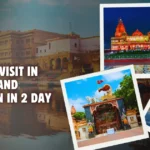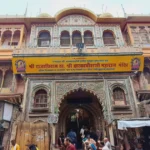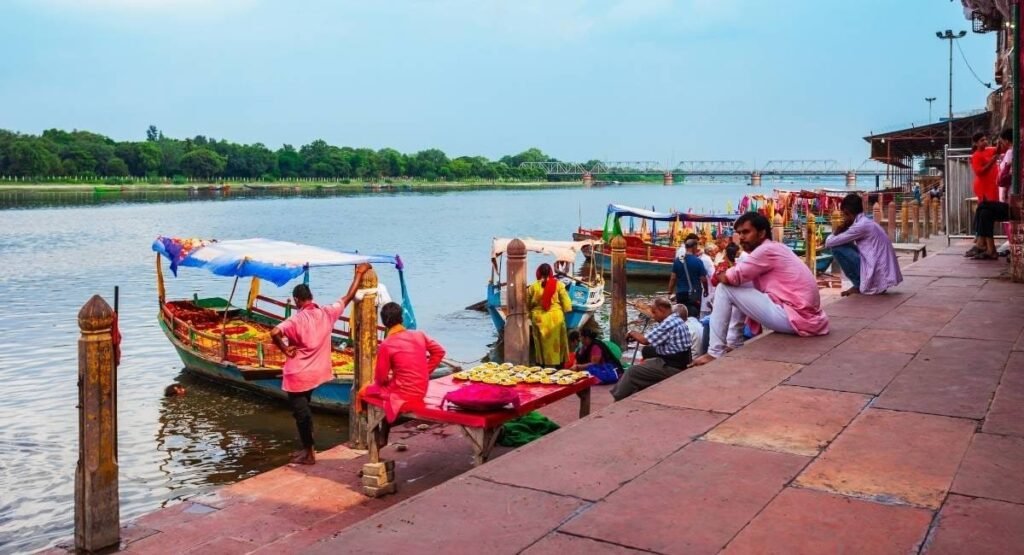The Saryu Aarti is a soul-stirring ritual that takes place every evening on the banks of the Saryu River in Ayodhya, Uttar Pradesh. This divine ceremony, steeped in spirituality and tradition, is a tribute to the sacred river and a celebration of India’s rich cultural heritage. For devotees and travelers alike, knowing the Saryu Aarti timings is key to experiencing this enchanting event, which blends the glow of lamps, the chant of mantras, and the serenity of the river into an unforgettable spectacle.
In this 1800-word guide, we’ll dive deep into everything you need to know about the Saryu Aarti timings, the rituals involved, how to reach the location, its cultural significance, and practical tips to enhance your visit. Whether you’re a pilgrim seeking blessings or a curious explorer eager to witness a piece of living history, this blog has all the details to help you plan your journey to Ayodhya.
Table of Contents
ToggleWhat Is the Saryu Aarti?
The Saryu Aarti is a Hindu ritual performed daily at Saryu Ghat in Ayodhya to honor the Saryu River, a waterway revered in Hindu mythology. Mentioned in the ancient epic Ramayana, the river is closely tied to Lord Rama, believed to have been born in Ayodhya. The Aarti is a ceremonial offering of light, where priests and devotees light lamps, chant Vedic hymns, and present flowers to the river, creating a mesmerizing display that reflects both devotion and gratitude.
Held at sunset, the Aarti transforms the riverbank into a scene of ethereal beauty. The flickering flames of hundreds of lamps dance on the water, accompanied by the rhythmic sounds of bells, conches, and devotional songs. It’s not just a religious event—it’s a cultural phenomenon that unites people in a shared moment of reverence and awe.
Why the Saryu Aarti Timings Matter
Understanding the Saryu Aarti timings is essential for anyone planning to attend. Here’s why:
- Spiritual Significance: The Aarti aligns with sunset, an auspicious time in Hinduism symbolizing the transition from light to darkness and the triumph of good over evil.
- Best Viewing Experience: Arriving on time ensures you secure a spot to witness the full ceremony, especially since the ghat can get crowded.
- Trip Coordination: Knowing the timings helps you schedule your visit to Ayodhya, allowing time to explore other attractions like the Ram Janmabhoomi Temple or Hanuman Garhi.
As one visitor described it, “The Saryu Aarti feels like a conversation with the divine. The timing makes it even more special—watching the sun set as the lamps light up is pure magic.”
Saryu Aarti Timings: A Detailed Breakdown
The Saryu Aarti timings vary with the seasons to coincide with sunset. Below is a comprehensive look at when the ceremony takes place:
Regular Daily Timings
- Summer Months (April to October): Starts at 7:00 PM
- During these warmer months, the sun sets later, so the Aarti is scheduled accordingly.
- Winter Months (November to March): Starts at 6:00 PM
- With shorter days and earlier sunsets, the Aarti begins an hour earlier to maintain its alignment with dusk.
These timings are approximate and may shift slightly due to local conditions or specific events. To avoid disappointment, it’s wise to confirm the exact time with local priests, guides, or the Ayodhya tourism office before your visit.
Special Timings During Festivals
Ayodhya comes alive during festivals, and the Saryu Aarti often takes on added grandeur. Here are some notable exceptions:
- Deepotsav (Diwali): Celebrated with thousands of lamps lighting up the ghats, the Aarti may start earlier, around 5:30 PM, to synchronize with the mass lighting ceremony.
- Ram Navami (Lord Rama’s Birthday): The Aarti might occur twice—once at dawn and again at dusk—around 6:00 PM or 7:00 PM, depending on the season.
- Kartik Purnima: This full-moon night sees an extended Aarti, often starting at 6:30 PM, with additional rituals like floating lamps on the river.
During these events, the ghat attracts larger crowds, so arriving at least an hour early is recommended to find a good vantage point.
The Rituals of Saryu Aarti: What to Expect
The Saryu Aarti is a beautifully choreographed ceremony that unfolds in distinct stages. Here’s a step-by-step look at the rituals:
1. Preparation Phase
- Priests arrange the Aarti thalis (plates) with large, ornate lamps filled with ghee (clarified butter), wicks, and flowers.
- Devotees gather along the ghat, some bringing their own offerings like marigolds or sweets.
2. Invocation with Mantras
- The ceremony kicks off with the recitation of Vedic mantras, ancient chants that call upon divine blessings.
- The sound of these hymns, echoing across the river, sets a meditative tone.
3. Lighting the Lamps
- The priests ignite the multi-tiered lamps and wave them in synchronized circular motions, offering light to the river goddess.
- Devotees light smaller diyas (earthen lamps) and float them on the Saryu, creating a sea of glowing lights.
4. Singing Bhajans
- Devotional songs in praise of Lord Rama and the Saryu River fill the air, with attendees joining in with clapping and singing.
- Instruments like harmoniums, drums, and bells add to the festive energy.
5. Offerings to the River
- Flowers, coconuts, and incense are offered to the river as tokens of devotion.
- Some participants take a dip in the Saryu beforehand, believing it purifies the soul.
6. Conclusion and Prasad
- The Aarti ends with a final prayer, followed by the distribution of prasad—typically sweets or fruits—shared among the crowd as a blessed offering.
The entire ritual lasts about 45 minutes to an hour, leaving attendees with a sense of peace and fulfillment.
How to Reach Saryu Ghat
Saryu Ghat, where the Aarti takes place, is centrally located in Ayodhya and accessible by various modes of transport. Here’s how to get there:
By Road
- From Lucknow: Approximately 140 km away (3-hour drive). Options include taxis, buses, or private cars via NH27.
- From Varanasi: Around 200 km (4-5 hours) by road, with regular buses and cabs available.
By Train
- Ayodhya Junction: Connected to cities like Delhi, Mumbai, and Kolkata. The ghat is just 3 km from the station—take an auto-rickshaw or cycle rickshaw for a quick ride.
By Air
- Nearest Airport: Lucknow’s Chaudhary Charan Singh International Airport (140 km). From there, hire a taxi or take a train to Ayodhya.
Local Transport
- Once in Ayodhya, auto-rickshaws, e-rickshaws, or taxis can drop you at Saryu Ghat. Walking is also an option if you’re staying nearby, as the ghat is a prominent landmark.
Parking Tip: Space is limited near the ghat, especially during peak times. Arrive early or opt for public transport to avoid hassle.
Cultural and Spiritual Significance of Saryu Aarti
The Saryu Aarti is deeply rooted in both spirituality and culture, making it a cornerstone of Ayodhya’s identity.
Spiritual Importance
- Mythological Connection: The Saryu River is tied to the Ramayana, flowing through the birthplace of Lord Rama. It’s seen as a divine entity capable of washing away sins.
- Blessings and Purification: Participating in the Aarti is believed to bring spiritual cleansing, peace, and divine favor.
- Daily Devotion: For locals, it’s a daily act of gratitude to the river that sustains their city.
Cultural Relevance
- Unity in Diversity: The Aarti attracts people from all backgrounds, fostering a sense of community and shared heritage.
- Living Tradition: It preserves ancient rituals, offering a window into India’s spiritual past.
- Tourism Boost: The event draws visitors globally, supporting local artisans, vendors, and guides.
A local priest once said, “The Saryu Aarti is our heartbeat. It connects us to Rama, to the river, and to each other.”
Recent Developments Around Saryu Ghat
The Uttar Pradesh government has been enhancing Ayodhya’s infrastructure to improve the pilgrimage experience. Key updates include:
- Riverfront Beautification: Cleaning initiatives and decorative lighting have made the ghat more appealing.
- Deepotsav Celebrations: The annual event now features record-breaking lamp-lighting displays, elevating the Aarti’s grandeur.
- Accessibility Projects: While not directly at Saryu Ghat, developments like the Radha Rani Ropeway in Barsana reflect a regional push to improve religious tourism.
These efforts ensure that the Saryu Aarti remains a vibrant, accessible experience for all.
Practical Tips for Visitors
To enjoy the Saryu Aarti fully, keep these tips in mind:
- Arrive Early: Get to the ghat 30-45 minutes before the Aarti to find a spot and soak in the ambiance.
- Dress Code: Wear modest attire (covering shoulders and knees) to respect the sacred setting.
- Footwear: Leave shoes at designated areas before entering the ghat.
- Offerings: Bring flowers or sweets to offer during the ritual—vendors near the ghat sell these items.
- Stay Hydrated: Carry water, especially in summer, as the ceremony can feel long in the heat.
- Photography: Capture the beauty, but avoid flash and be considerate of others’ space.
- Safety: Watch your belongings in the crowd and stay with your group if possible.
Exploring Ayodhya After the Aarti
Post-Aarti, explore these nearby gems:
- Ram Janmabhoomi: The historic site of Lord Rama’s birth, just a short distance away.
- Hanuman Garhi: A hilltop temple dedicated to Hanuman, offering stunning views.
- Nageshwarnath Temple: An ancient Shiva temple with a serene vibe.
These spots complement the Aarti experience, enriching your Ayodhya visit.
Conclusion: Don’t Miss the Saryu Aarti
The Saryu Aarti is more than a ritual—it’s a journey into the soul of Ayodhya. With its precise timings—7:00 PM in summer and 6:00 PM in winter—and its blend of spirituality and spectacle, it’s an event that leaves a lasting mark. Plan your trip, arrive on time, and let the glow of the lamps and the chant of mantras transport you to a place of peace and wonder.
Check the latest Saryu Aarti timings before you go, and prepare for an experience that’s as timeless as the river itself.
Plan Your Spiritual Journey Today
Have questions or need assistance organizing your visit to the sacred temples of Mathura and Vrindavan? We’re here to help you every step of the way.
Email us at info@mathuravrindavantemples.com
Call or WhatsApp us at +91-7819818361
Let the divine journey begin with Mathura Vrindavan Temples .











